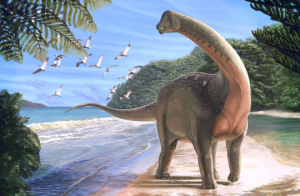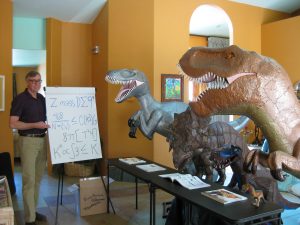World renowned paleontologist, Jack Horner has a great video on YouTube that provides an explanation. Pachycephalosaurus is featured as one of the dinosaur examples demonstrating his theory. Dinosaurs are believed to have grown like birds. Dinosaurs skulls could change significantly even after reaching 80% of adult size. Therefore, smaller dinosaurs with different names could just be juveniles of other known larger dinosaurs. Jack Horner’s studies of cutting bones to determine the growth stage of the dinosaur is discussed in the program. Link to video below.
https://www.youtube.com/watch?v=xYbMXzBwpIo
In a prior article about Pachycephalosaurus (“Pachycephalosaurus at the Park!” posted on 1/12/2018), I mentioned Europe as one of the locations for this dinosaur. Micropachycephalosaurus the longest name for a dinosaur was actually discovered in China. However additional studies of this 2 – 3-foot-long little dinosaur failed to match similarities to Pachycephalosaurus in North America. This was due to the missing fossil skull at the time of re-examination. As a result, the little dinosaur was reclassified to the Cerapod group of ceratopsians in 2011. It may lose its name and longest name status! This dinosaur would definitely be the right size for a pet. Hopefully he didn’t have the head butting trait of supposed relatives.
Jack Horner’s video mentions how there was a drive to find the next biggest Dinosaur or New Dinosaurs to name, which would tend to make looking for juveniles less of a priority.
A New Large Dinosaur “Mansourasaurus shahinae” was discovered in the 80 million year old site Dakhla Oasis of Egypt’s Sahara in 2013. Recently the Study of these fossils has been in the news. Dinosaurs from the Cretaceous Period are very rare in the continent of Africa (excluding Madagascar). This large Sauropod (long necked plant eating dinosaur) has many characteristics of its cousins in Europe and Asia. It had been thought that as the continents separated Africa was an island and its Dinosaurs would have taken their own evolutionary path for millions of years. The Study of Mansourasaurus would indicate the continents were not completely isolated. Matthew Lamanna of the Carnegie Museum of Natural History and his colleagues discovered three other Titanosauropods “Dreadnoughtus” & “Notocolossus” in Argentina and “Paralititan” in Egypt. You can read more about Matt Lamanna and his activities at https://carnegiemnh.org/researcher/staff-directory/matthew-lamanna/
Above image artist concept of Mansourasaurus courtesy Carnegie Museum of Natural History by Andrew McAfee
“Encouraging the Appreciation of Art and Education through the Inspiration of Dinosaurs”
Paul & Prehistoric Pals
Your feedback is appreciated, Thank you!


